The rediscovery of the Buen Jesus y Nuestra Senora del Rosario, a sunken Spanish galleon lost nearly 400 years ago in the Gulf of Mexico, has unveiled a treasure trove that played a pivotal role in the downfall of the Spanish Empire.
The ship, part of a fleet of 28 Spanish merchants hit by a hurricane in 1622, carried a staggering haul of gold, silver, pearls, and even parrots.
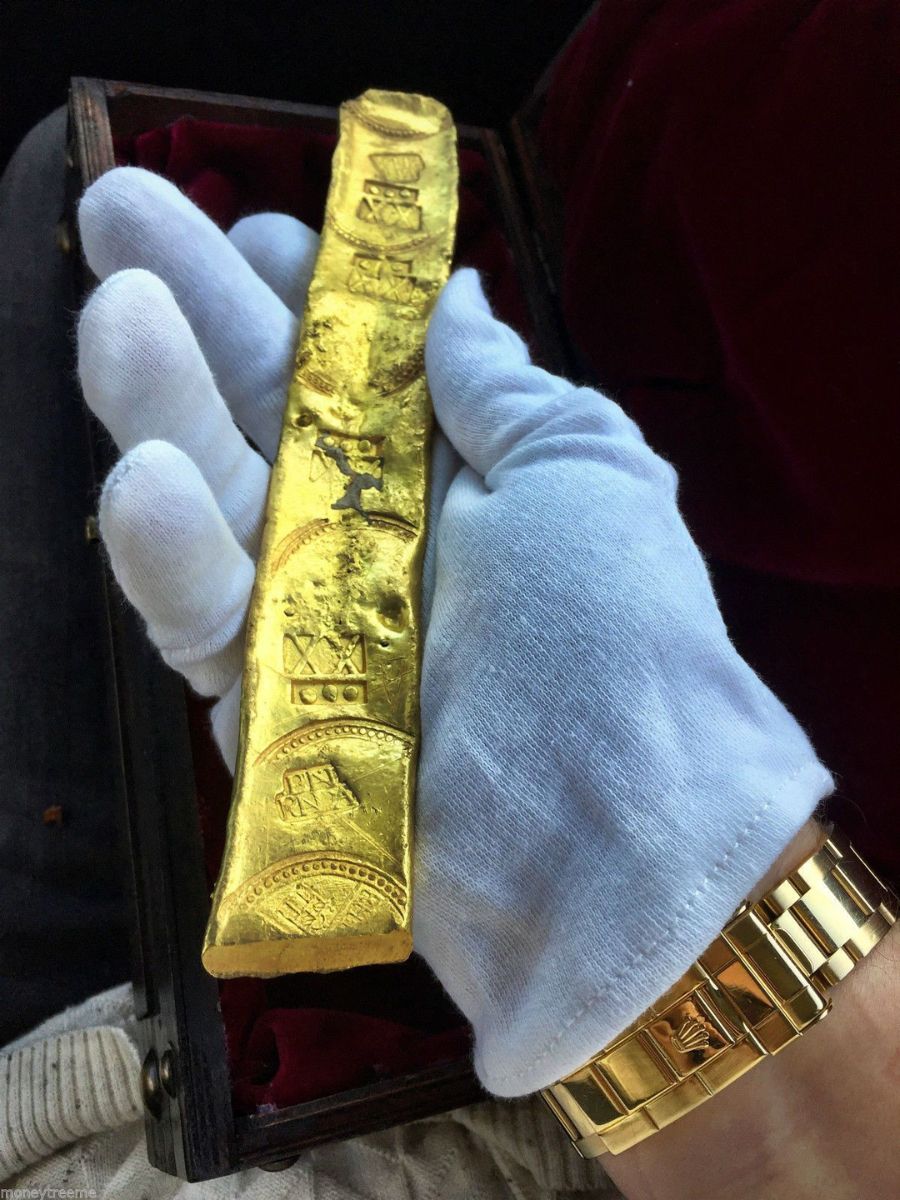
The treasure that sank the Spanish Empire: 400-year-old shipwreck reveals haul of gold, silver, pearls and even parrots
The treasures, now revealed at a depth of 400 meters, include 39 gold bars, nearly 1,200 silver pieces of eight, and over 6,600 pearls from a rare South American oyster.
The pearls, once abundant, were nearly extinct by the 17th century due to over-exploitation. The wreckage also tells a poignant tale of human cost, with 60,000 Caribbean natives believed to have perished while diving for pearls on behalf of the Spanish. The Buen Jesus’s tragic fate, contributing to the collapse of the Spanish Empire, is a testament to the unexpected consequences of colonial ventures.
The artifacts excavated from the site, including an astrolabe, gold bars, and a tortoiseshell comb, provide a vivid snapshot of life in the early modern world. The significance of this discovery underscores its status as “the major find of our time,” according to Odyssey Marine Exploration. The exhibition of these historical treasures offers a glimpse into the deep-sea secrets that have been hidden for centuries.
The loss of the Buen Jesus y Nuestra Senora del Rosario along with seven other ships destroyed the Bank of Madrid – and even contributed to the collapse of the Spanish Empire.
Now deep-sea divers believe they have found its wreck 400m deep, with 17,000 objects on board revealing that it was carrying gold, pearls – and even parrots.

Treasure: Some of the 27 gold bars recovered from the wreck of Buen Jesus y Nuestra Senora del Rosario
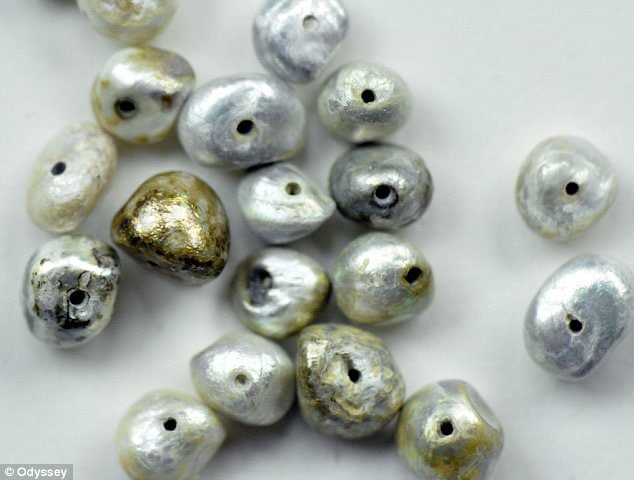
Unique: These pearls are from a rare species of oyster found in seabeds off the coast of Venezuela
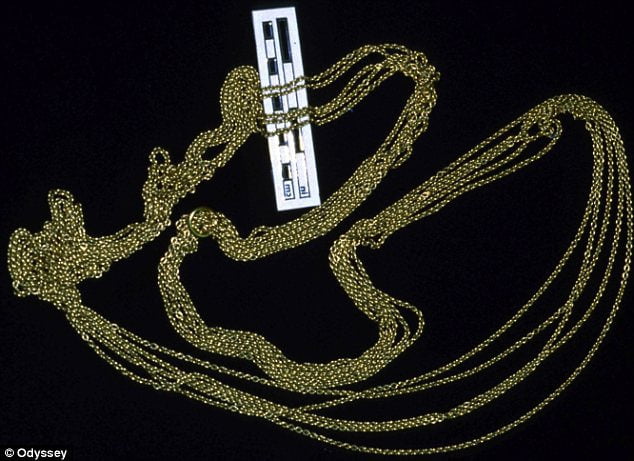
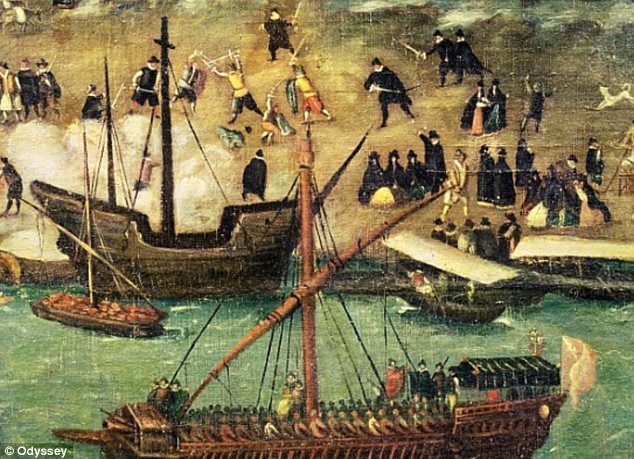
Galleon: This image of 16th-century Seville shows a ship similar to that lost in the Gulf of Mexico
The discovery unveiled today gives a fascinating glimpse into the sometimes unexpected treasures which made the colonial economy run.
The wreck site, around 400 miles from the Florida Keys, contains 39 gold bars, and nearly 1,200 silver pieces of eight.
More unusually, the site features more than 6,600 pearls being exported to Europe from the coast of Venezuela.
The gems came from a type of oyster which was unique to South America but which was nearly extinct by the early 17th century thanks to over-exploitation by colonial traders.

Bullion: A gold bar stamps with official marks certifying its purity and taxation status
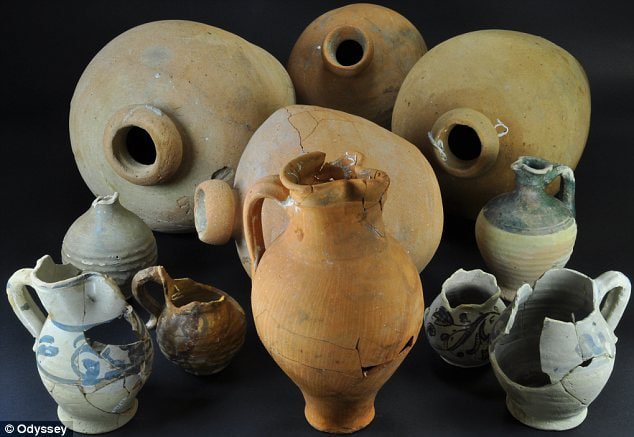
Vessels: These ceramic jars and tableware were used to furnish the doomed ship on its voyage
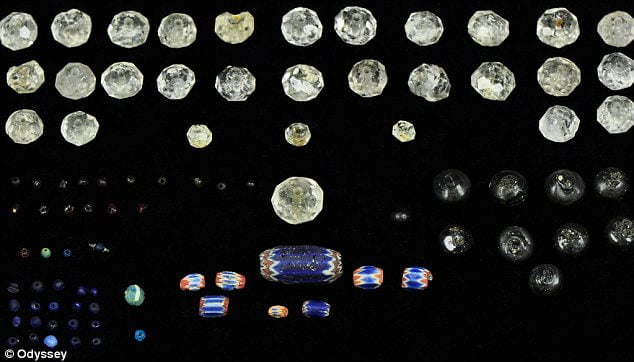
Precious: A selection of the jewels and precious stones being transported from the New World to the Old
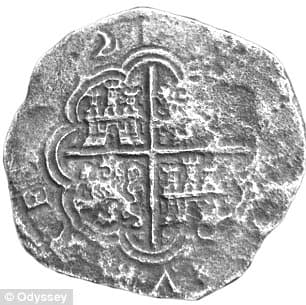
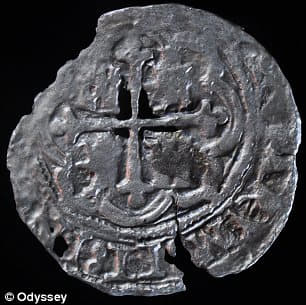
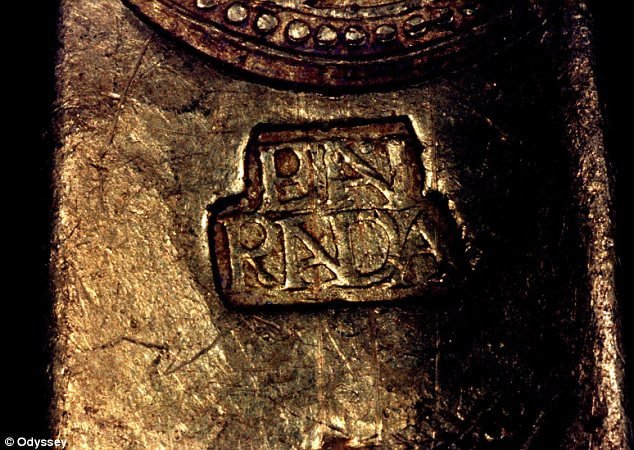
Certificate: A stamp reading ‘en rada’ operating as a sort of guarantee of the gold’s origin
And it was not only wildlife to suffer from the oyster trade – 60,000 Caribbean natives are believed to have died while diving for pearls on behalf of the Spanish.
In addition to the precious metals and jewels, two bird’s bones were found at the site, thought to have come from a blue-headed parrot.
The parrots made popular pets because of their bright plumage and ability to mimic human speech, but this is the first time the remains of one have been found in a shipwreck.
Another glimpse of everyday life in the early modern world comes from a tortoiseshell comb for lice apparently made by a member of the ship’s crew.
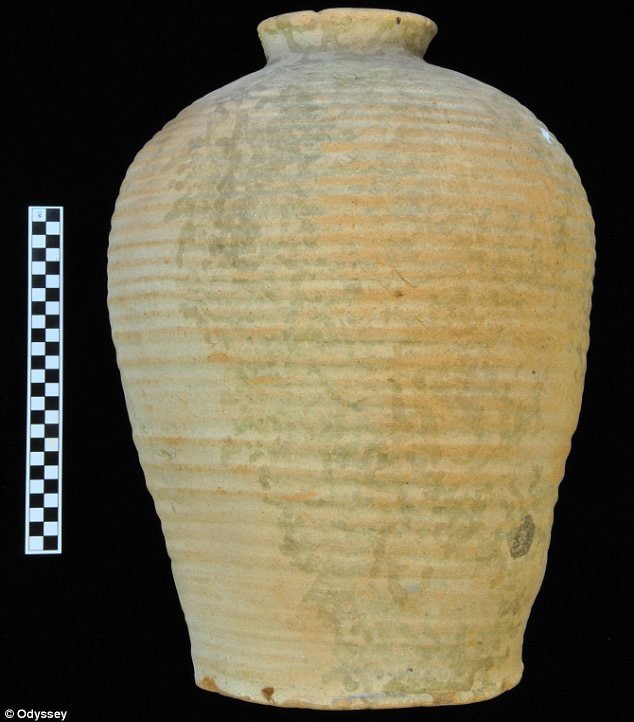
Jar: The artefacts found by the Odyssey expedition have not been seen for nearly 400 years
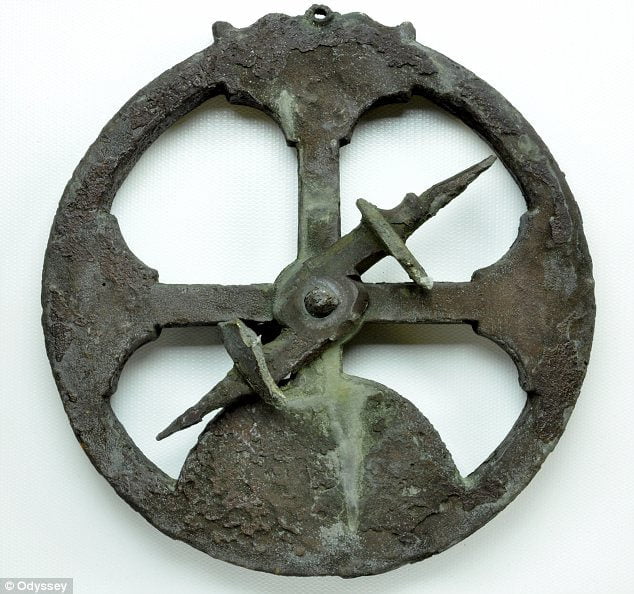
Astrolabe: This was used to navigate by the stars but did not help the ship avoid a devastating hurricane
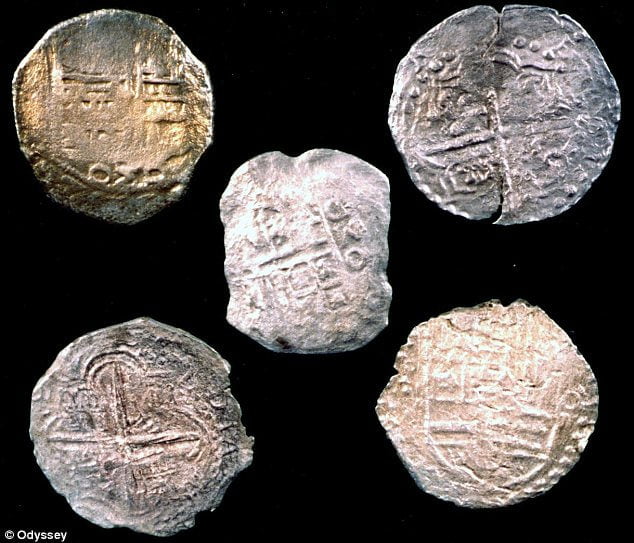
Riches: But the empire was deep in debt and the wreck of its ships contributed to its downfall
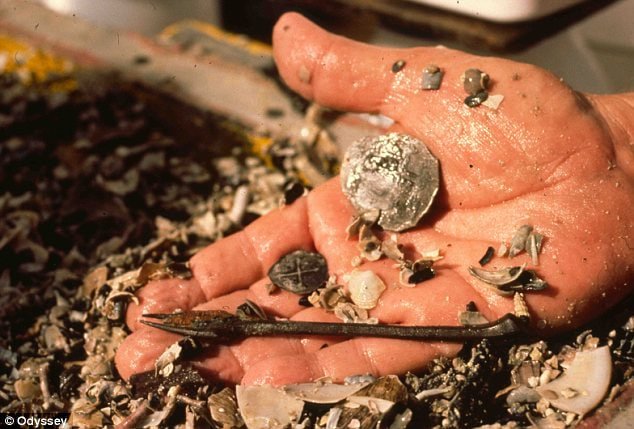
Examination: An archaeologist holding silver retrieved from the wreck 400m deep in the Gulf of Mexico
The Buen Jesus y Nuestra Senora del Rosario was one of a fleet of 28 Spanish merchants hit by a hurricane on September 5, 1622.
Eight were sunk, killing 500 people on board and hiding their treasure for nearly four centuries.
The Spanish economy had been relying on the boost it would have received from the ships’ arrival, and the disaster contributed to the eventual downfall of the formerly all-powerful colonial empire.
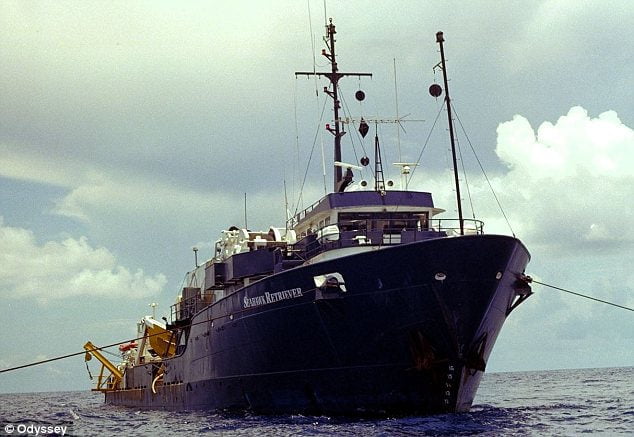
To the rescue: The Seahawk Retriever moored over the site of the shipwreck

4Delicate: Cutting-edge technology was used to retrieve the valuable treasures from the seabed

Handle with care: Team members examine containers full of ceramic jars from the Buen Jesus

Machinery: This filtration system designed to sift small finds was specially designed for the expedition

Find: The site of the shipwreck is around 400 miles away from the Florida Keys

Dark legacy: An early modern engraving of African slaves at work in the silver mines of Peru
Excavations at the site of the wreck have been going on for more than 20 years, using deep-sea technology developed by British engineers to drill for oil in the North Sea.
They were carried out by Odyssey Marine Exploration, whose president Greg Stemm told The Times: ‘This is the major find of our time.’
The objects excavated from the Rosario are going on display at the company’s headquarters in Florida.
Oceans Odyssey 3, a book on the shipwreck and its contents, is published today by Oxbow Books.
SOUCE: dailymail.co.uk